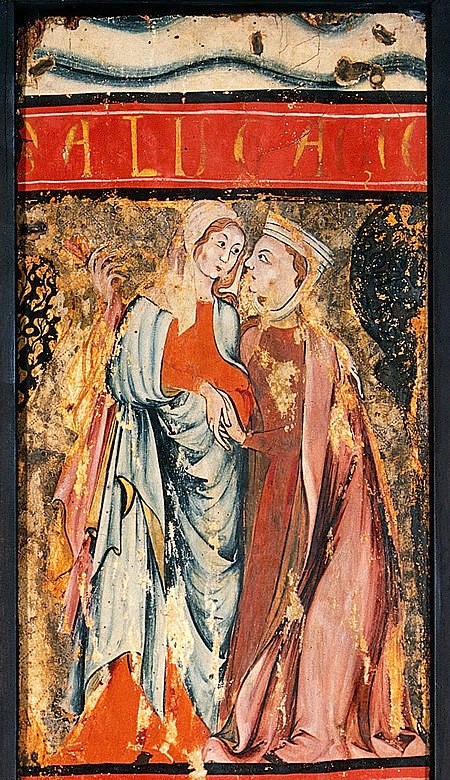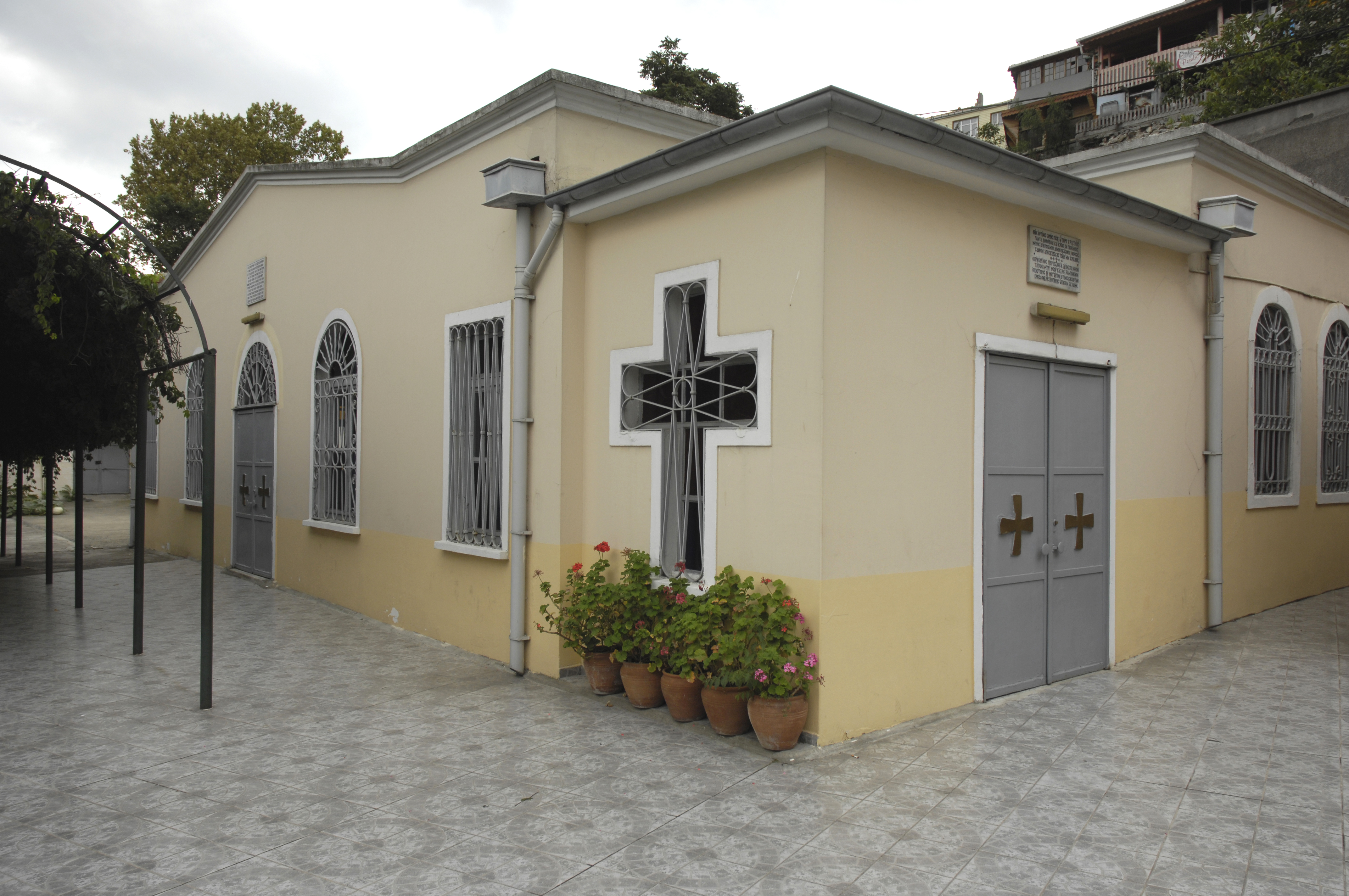This last is the ancient Christian cemetery now called the Catacomb of St Sebastian; the word “catacomb” was in fact originally the name of the site of this cemetery specifically, and only later came to be used as a generic term for ancient subterranean Christian burial grounds. The basilica over the cemetery, now also entitled to St Sebastian, was originally known as the “Basilica Apostolorum”, in memory of a tradition that the bones of Peter and Paul were kept there for a time, probably to save them from destruction in the era of persecutions. This is referred to in various ancient sources, including the Depositio Martyrum, and confirmed by modern archeological research. The celebration of the feast “on three streets” would refer then to a procession to visit the site of St Peter’s burial at the Vatican, that of St Paul on the via Ostiensis, and the cemetery where their remains were once kept.
It should not be surprising, then, that at a certain point the double feast was divided, and kept in a more manageable way as two separate feasts. In the Gelasian Sacramentary, we find three Masses of Ss Peter and Paul assigned to June 29th; the oldest copy of the Gelasianum dates to roughly 750, but much of the material is considerably older, some of it reaching back even to the days of St Leo the Great 300 years earlier. In some manuscripts, however, one of the three, “the proper Mass of St Paul”, has already been assigned to June 30th. In the Gregorian Sacramentary, written roughly a century later, we find the feast of St Peter on June 29th, and that of St Paul on the 30th; each Mass contains references to the other Apostle, but they are nevertheless clearly distinct. Thus, by the time of Charlemagne, the “bifestum” of Prudentius had already been separated into a two day feast.
At the Mass of June 29th, the majority of the texts refer either to St Peter alone (Introit, Epistle, Alleluia, Gospel, Communion) or to Apostles generically, as in the Gradual “Thou shalt make them princes over all the earth.” The sole reference to St Paul is in the Collect, “O God, who hast consecrated this day by the martyrdom of Thy Apostles Peter and Paul, grant Thy Church to follow in all things the teaching of those through whom she first received the faith.” The Office is likewise dedicated almost entirely to St Peter, the notable exceptions being the hymns of Vespers and Lauds, and the antiphon of the Magnificat at Second Vespers. This latter is in both the structure of its text and in its Gregorian melody very similar to the Magnificat antiphon at Second Vespers of Pentecost, to indicate that the mission of the Holy Spirit is fulfilled in the lives and deaths of the Apostles, and thereafter in their successors.
Ant. Hodie * Simon Petrus ascendit crucis patibulum, alleluia: hodie clavicularius regni gaudens migravit ad Christum: hodie Paulus Apostolus, lumen orbis terrae inclinato capite pro Christi nomine martyrio coronatus est, alleluia.
The following day, therefore, the whole of the liturgy is dedicated to St Paul, and is not called a day within the octave of the Apostles, but rather “the Commemoration of St Paul.” The variable texts of the Mass all refer to him, but a commemoration of St Peter is added to the feast, in accordance with the tradition that the two are never entirely separated in the veneration paid them by the Church. (The same is done on the feast of St Paul’s Conversion, and commemorations of him are added to the feasts of St Peter’s Chairs and Chains.) The Office is likewise dedicated entirely to him; both the Mass and Office, however, make use of St Paul’s own testimony in Galatians 2 to the mission of the two Apostles: “For he who worked in Peter for the apostleship of the circumcision, worked in me also among the gentiles; and they knew the grace of God that was given to me.” In the 1130s, a canon of St Peter’s Basilica named Benedict writes that it was still the custom in his time for the Pope to keep the feast of St Peter at the Vatican, but then celebrate Vespers at the tomb of St Paul in the great Basilica on the Ostian Way, “with all the choirs” of the city.
 |
The Apostles Paul and Barnabas at Lystra (Acts 14, 5-18), by Jacob Jordaens, 1645; Akademie der bildenden Künste, Vienna.
|
But all human efforts … did not banish the sinister belief that the conflagration (which destroyed much of Rome in July of 64 A.D.) was the result of an order. Consequently, to get rid of the report, Nero fastened the guilt and inflicted the most exquisite tortures on a class hated for their abominations, called Christians by the populace. Christus, from whom the name had its origin, suffered the extreme penalty during the reign of Tiberius at the hands of one of our procurators, Pontius Pilatus, and a most mischievous superstition, thus checked for the moment, again broke out not only in Judaea, the first source of the evil, but even in Rome, where all things hideous and shameful from every part of the world find their center and become popular. Accordingly, an arrest was first made of all who pleaded guilty; then, upon their information, an immense multitude was convicted, not so much of the crime of firing the city, as of hatred against mankind. Mockery of every sort was added to their deaths. Covered with the skins of beasts, they were torn by dogs and perished, or were nailed to crosses, or were doomed to the flames and burnt, to serve as a nightly illumination, when daylight had expired.
Nero offered his gardens for the spectacle, and was exhibiting a show in the circus, while he mingled with the people in the dress of a charioteer or stood aloft on a car. Hence, even for criminals who deserved extreme and exemplary punishment, there arose a feeling of compassion; for it was not, as it seemed, for the public good, but to glut one man’s cruelty, that they were being destroyed. (Book XV, chapter 44)
 |
| The Torches of Nero, by Henryk Siemiradzki, 1876 |
The “circus” to which Tacitus refers as the site of the martyrdom was a chariot-racing facility that sat immediately to the south of the via Cornelia, next to where St Peter’s Basilica is today. It was allowed to fall to ruins after the death of Nero, and apparently razed to the ground by Constantine to make space for the original basilica. Left in place, however, was the Egyptian obelisk brought to Rome by Caligula, and set up on the “spine” of the circus, as the Romans called it, the wall down the middle around which the chariots raced. The turning posts on the end are called “metae” in Latin, and the apocryphal Acts of Peter, a work of the mid-2nd century, say that Peter was crucified “inter metas”; the obelisk, then, would have been among the last things St Peter saw in this world. After sitting next to the old Basilica for over 12 centuries, it was moved in 1586 to the area in front of the new church, then still under construction, later to be surrounded by Bernini’s Piazza. Its former location is marked by a plaque in the ground to the side of the modern basilica; the surrounding area was renamed by Benedict XV “Piazza of the First Martyrs of Rome.”
 |
The Basilica of St Peter in 1450, according to the reconstruction of H.W. Brewer, 1891. The obelisk is seen immediately in front of the first rotunda on the left side of the basilica.
|























